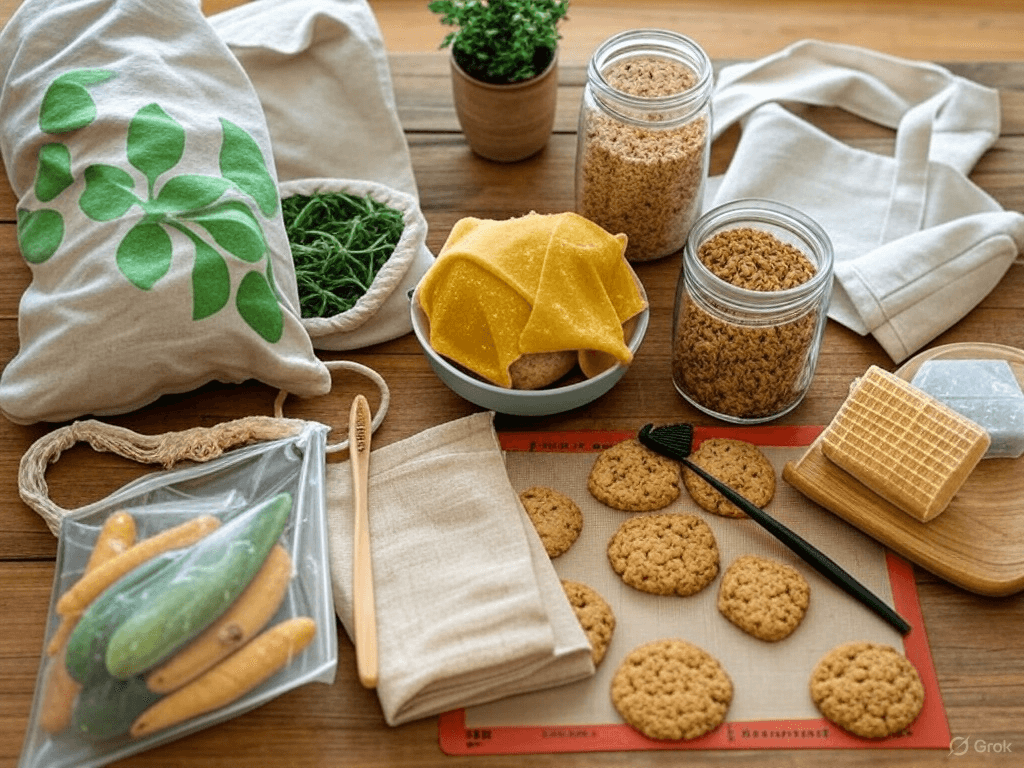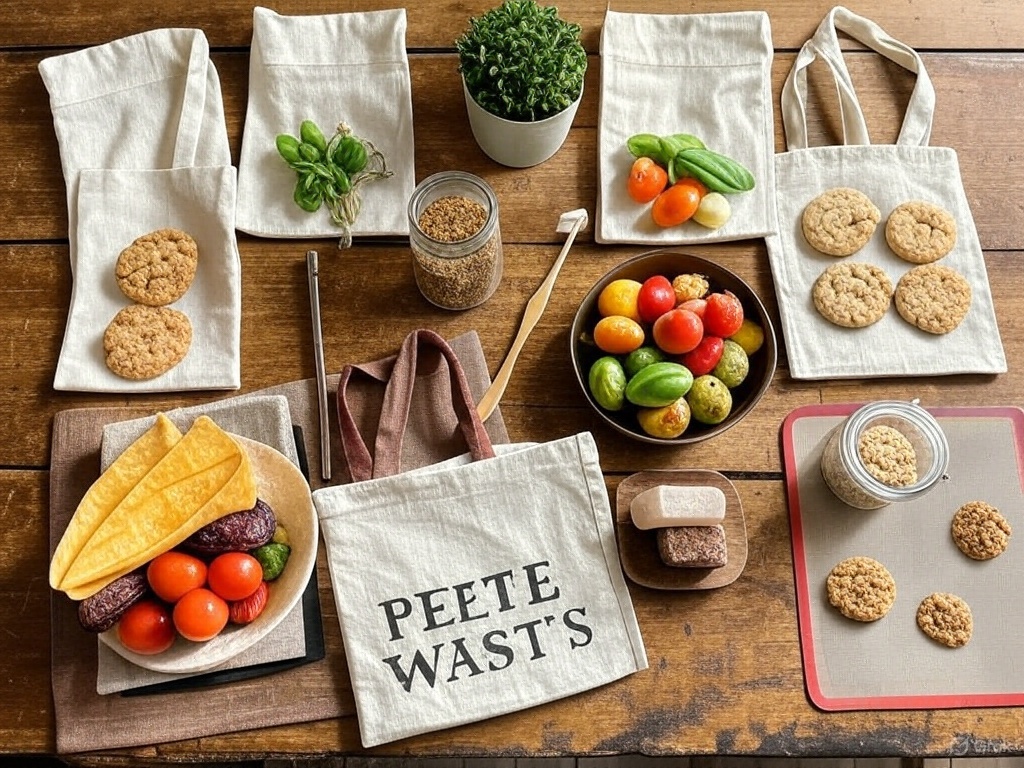Hey there, eco-warriors! Ready to make a dent in your environmental footprint without breaking the bank? Going zero-waste doesn’t mean you need to overhaul your life or spend a fortune. In fact, some of the most impactful changes are super affordable and easy to implement. Today, I’m sharing 10 zero-waste swaps you can make right now, all under $10, that’ll help you live greener, save money, and feel good about your choices. Let’s dive in!

Why Zero-Waste Swaps Matter
Before we get to the swaps, let’s talk about why this matters. Every year, the average person generates 4.9 pounds of waste per day, according to the EPA. That’s a lot of trash piling up in landfills! By making small, intentional changes, you can reduce your waste, conserve resources, and even inspire others to do the same. Plus, many of these swaps save you money in the long run. Win-win, right?
The best part? You don’t need to spend a ton to get started. These budget-friendly swaps are perfect for beginners or anyone looking to live more sustainably without the hefty price tag. Ready to make a difference? Here’s how to do it for less than $10 each.
1. Reusable Cotton Produce Bags ($5–$8)
Why it’s awesome: Single-use plastic produce bags are a major culprit in landfill waste. Swapping them for reusable cotton produce bags is a game-changer. They’re lightweight, washable, and perfect for carrying fruits, veggies, or bulk items like grains and nuts.
How to use it: Toss a few in your grocery bag before heading to the store. Use them for everything from apples to loose spinach. Bonus: They double as storage bags at home!
Where to find them: Check out local thrift stores, Amazon, or Etsy for sets of 3–5 bags for under $10. Look for organic cotton for extra eco-points.
Pro tip: Keep a couple in your car or purse so you’re always prepared for a spontaneous grocery run.
2. Bamboo Toothbrush ($2–$4)
Why it’s awesome: Plastic toothbrushes take 400 years to decompose in landfills. Bamboo toothbrushes, on the other hand, are biodegradable and just as effective. Most have soft bristles that are gentle on your gums, too.
How to use it: Brush as you normally would! When it’s time to replace it (every 3–4 months), remove the bristles (most are recyclable) and compost the bamboo handle.
Where to find them: Drugstores like CVS or Walgreens often carry them for $2–$4. You can also find them online at places like Package Free Shop or Grove Collaborative.
Pro tip: Look for brands with compostable packaging to keep the zero-waste vibe going.
3. Reusable Stainless Steel Straw ($1–$3)
Why it’s awesome: Plastic straws are a no-go for the planet—most end up in oceans or landfills. A stainless steel straw is durable, easy to clean, and fits in your bag for on-the-go sipping.
How to use it: Pop it in your drink at a café or use it at home. Most come with a tiny cleaning brush to keep it squeaky clean.
Where to find them: You can snag one for as low as $1 at Target, Walmart, or online retailers like Amazon. Some even come with a carrying case!
Pro tip: If metal’s not your thing, try a silicone straw for a softer feel—still under $3 in many stores.
4. Beeswax Wraps ($8–$10 for a small set)
Why it’s awesome: Say goodbye to plastic wrap! Beeswax wraps are reusable, washable, and perfect for covering bowls, wrapping sandwiches, or storing leftovers. They’re made from cotton coated with beeswax, making them moldable and eco-friendly.
How to use it: Warm the wrap in your hands to make it pliable, then press it around food or containers. Wash with mild soap and cool water to reuse.
Where to find them: Small sets or single wraps are available on Etsy or at stores like Whole Foods for under $10. You can even DIY them for less if you’re crafty!
Pro tip: Avoid using them with raw meat or hot foods to keep them in tip-top shape.
5. Reusable Tote Bag ($1–$5)
Why it’s awesome: Plastic bags are a major source of waste, with trillions used globally each year. A sturdy reusable tote is a no-brainer for shopping, errands, or even as a gym bag.
How to use it: Keep one folded in your car, purse, or by the door so you’re never caught without it. Many stores offer discounts for bringing your own bag!
Where to find them: Thrift stores, dollar stores, or grocery stores often have cute totes for $1–$5. Look for cotton or recycled materials for extra sustainability.
Pro tip: Pick a fun design to make it feel like a fashion statement, not just a chore.
6. Mason Jar for Bulk Shopping ($1–$3)
Why it’s awesome: Buying in bulk reduces packaging waste, and mason jars are perfect for storing grains, spices, or snacks. They’re also great for leftovers or as drinking glasses.
How to use it: Bring a clean mason jar to a bulk store, weigh it (most stores have scales), and fill it with your goodies. At home, they keep your pantry organized and pest-free.
Where to find them: Check dollar stores, thrift shops, or Walmart for single jars under $3. You probably already have one in your kitchen!
Pro tip: Label your jars with a chalkboard sticker for easy organization.
7. Reusable Coffee Filter ($5–$8)
Why it’s awesome: Disposable coffee filters create unnecessary waste, especially if you’re a daily brewer. A reusable coffee filter (often made of hemp or cotton) lasts for years and saves you money.
How to use it: Place it in your coffee maker, add grounds, and brew as usual. Rinse it out and let it dry between uses.
Where to find them: Amazon, Target, or eco-friendly stores like EarthHero have them for $5–$8. Some brands even make universal sizes for most coffee makers.
Pro tip: Pair it with a reusable coffee cup for a fully zero-waste coffee run.
8. Cloth Napkins ($5–$10 for a set)
Why it’s awesome: Paper napkins and paper towels add up fast. Cloth napkins are reusable, washable, and add a touch of class to your meals. Plus, they’re great for wiping down surfaces.
How to use them: Use them at meals, then toss them in the wash with your regular laundry. Keep a stack in the kitchen for easy access.
Where to find them: Thrift stores are goldmines for affordable cloth napkins—think $5 for a set of 4–6. You can also check IKEA or Amazon for budget-friendly options.
Pro tip: Sew your own from old fabric scraps if you’re feeling crafty!
9. Silicone Baking Mat ($8–$10)
Why it’s awesome: Parchment paper and aluminum foil are single-use culprits in the kitchen. A silicone baking mat is non-stick, reusable, and perfect for baking cookies, roasting veggies, or even as a work surface for dough.
How to use it: Place it on your baking sheet and use it as you would parchment paper. Wash with soap and water to reuse.
Where to find them: Amazon, Walmart, or Bed Bath & Beyond have them for $8–$10. Look for BPA-free options for peace of mind.
Pro tip: Cut one in half for smaller trays or to share with a friend.
10. Bar Soap or Shampoo Bar ($5–$8)
Why it’s awesome: Plastic bottles from liquid soap and shampoo are a huge source of waste. Bar soaps and shampoo bars are package-free, long-lasting, and often made with natural ingredients.
How to use it: Lather up as you would with liquid soap or shampoo. Store it in a dry place (like a soap dish) to make it last longer.
Where to find them: Lush, local farmers’ markets, or online stores like Package Free have bars for $5–$8. Look for brands with minimal or compostable packaging.
Pro tip: Try a conditioner bar for a fully plastic-free hair routine!
How to Stick With Your Zero-Waste Journey
Starting with these swaps is a fantastic step, but the key to lasting change is consistency. Here are a few tips to keep you on track:
- Start small: Don’t try to do all 10 swaps at once. Pick 1–2 that feel doable and build from there.
- Involve your household: Get your family or roommates on board to make it a team effort.
- Celebrate progress: Every plastic bag or straw you avoid is a win for the planet!
- Shop secondhand: Thrift stores and local markets are treasure troves for affordable, sustainable finds.
The Bigger Picture: Why These Swaps Are Worth It
These $10 swaps might seem small, but their impact adds up. By reducing your reliance on single-use plastics, you’re helping to cut down on the 8 million metric tons of plastic that enter our oceans annually. You’re also saving money in the long run—reusable items like straws, bags, and napkins pay for themselves over time. Plus, you’re setting an example for others, which can spark a ripple effect of positive change.
Ready to Go Zero-Waste Swaps on a Budget?
You don’t need a big budget to live more sustainably. These 10 zero-waste swaps—all under $10—prove that small changes can make a big difference. Whether you start with a bamboo toothbrush or a set of cloth napkins, each step brings you closer to a greener lifestyle.
So, what’s your first swap going to be? Let me know in the comments, or share your favorite zero-waste tips! And if you found this article helpful, share it with a friend who’s ready to join the eco-friendly movement. Together, we can make the planet a cleaner, happier place—one swap at a time.
